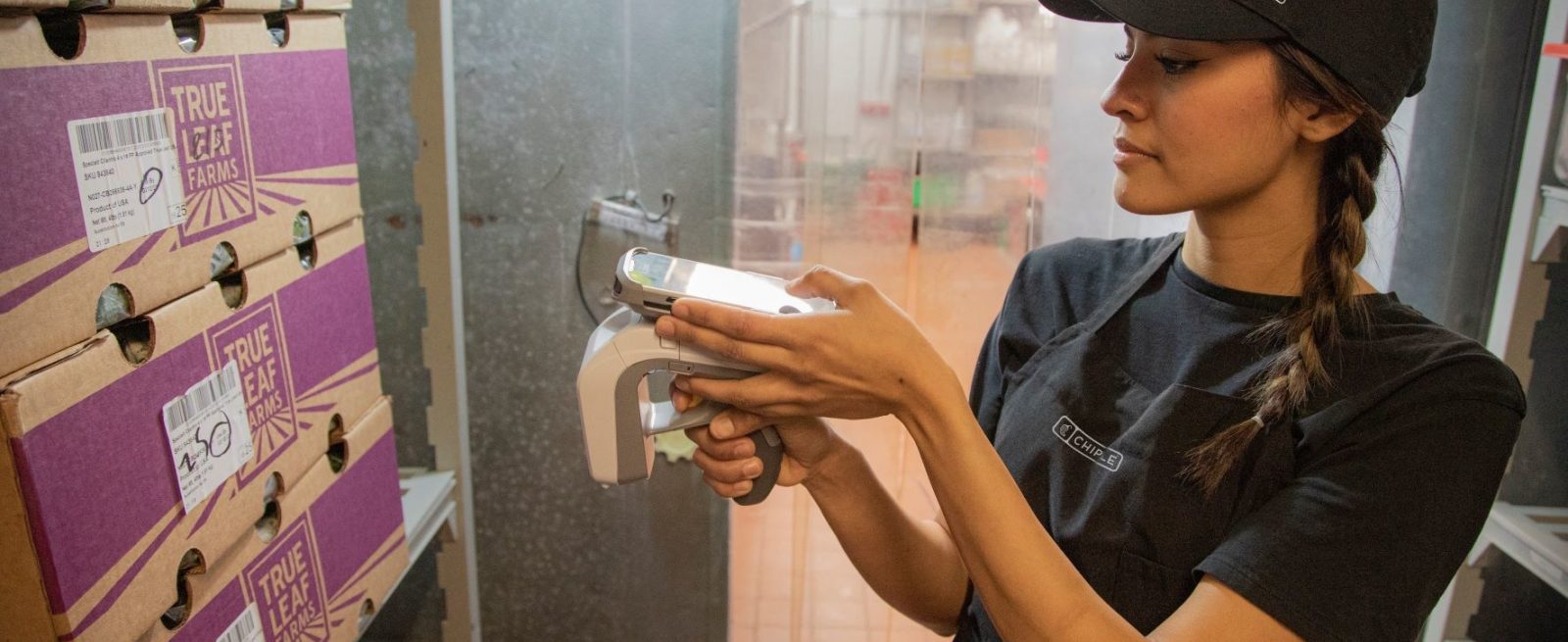What Restaurant Operators Need to Know About RFID
3 Min Read By MRM Staff
In early 2022, Chipotle Mexican Grill began testing radio-frequency identification (RFID) technology to enhance its traceability and inventory systems at its Chicago distribution center and approximately 200 restaurants in the greater Chicago area, becoming one of the first major restaurant companies to leverage RFID case labels to track ingredients from suppliers to restaurants via serialization. A year later, the chain announced plans to expand the use of RFID across its store.
The company worked closely with the Auburn University RFID Lab to refine the pilot program, which is being tested on meat, dairy, and avocados from five Chipotle suppliers. Ingredients in the test arrive at Chipotle restaurants affixed with RFID enabled case labels and are scanned by RFID readers, which complement existing scanners in the restaurants, requiring minimal incremental investment. The tech-enabled traceability system is designed to allow the company to act on food safety and quality concerns swiftly, efficiently, and precisely. Chipotle invited key supply partners to participate in the test and provided partners with an RFID playbook with best practices and benefits of the program. Chipotle teamed with RFID software provider Mojix, materials science and RFID innovator Avery Dennison, and RFID reader and encoder solutions provider Zebra Technologies.
Sam Vise, CEO and Co-Founder at Optimum Retailing, is passionate about where RFID is headed and its potential for the restaurant industry. He believes that it's underutilized in the restaurant industry and can discuss the benefits it has for inventory management and food waste reduction, and why it’s a secret tech weapon that more brands should utilize. Vise spoke with Modern Restaurant Management (MRM) magazine about the opportunity for RFID in restaurants.
What is RFID and how is it being used in restaurants?
Radio Frequency Identification, commonly abbreviated to RFID, is an age-old radio frequency technology that uses electromagnetic fields to track products. It is a very small hardware device that can be attached to products to track them. RFID tags work in refrigerated environments which make them beneficial tools for the restaurant industry where food temperature management is crucial during transportation and storage.
Restaurants are using them to track supplier shipments to easily locate where they are in the supply chain journey, and can also use RFID tags to monitor inventory levels and track food expiration dates. For example, they can use RFID tags attached to milk cartons to track expiration dates and prioritize selling products that are expiring sooner, reducing waste.
What should restaurant operators understand about RFID?
Restaurant operators should understand that RFID can help solve various challenges prevalent in the Quick Service Restaurant (QSR) industry, such as inventory mismanagement and food waste. By capturing data on incoming inventory and monitoring restaurant stock levels, RFID supports aligning supply with trending demands. This capability is particularly useful for managing promotions like limited-time offers, ensuring advertised specials are available, minimizing food waste, and enhancing operational control over purchasing and inventory management in the restaurant sector.
What are the costs associated with implementing RFID into restaurants?
Implementing RFID in a restaurant involves significant initial investment, primarily in antenna installation, RFID readers, software integration, and network infrastructure. The ongoing costs are relatively lower, with the main expenses being RFID tags, maintenance, and staff training. While the initial setup can be costly, the benefits of improved inventory management, reduced labor costs, and enhanced operational efficiency can provide a substantial return on investment over time.
In what ways can RFID help restaurants be more efficient and realize savings?
RFID tags enable operators to passively monitor food stock and gain visibility into items nearing expiration, facilitating proactive measures to minimize waste. This visibility empowers data-driven decisions and informs strategies for activating promotions and optimizing inventory management aligned with the restaurant’s goals. All these factors directly impact operators’ already-slim margins, with food waste being a significant contributing factor to their bottom line.
How can RFID tech help restaurants with food safety, food waste and sustainability?
RFID tags are invaluable to restaurant operators for tracking perishable goods and prioritizing items nearing expiration, thus reducing the risk of using expired products. They facilitate efficient product rotation akin to grocery stores, ensuring items close to expiration are utilized first. Unlike retailers with non-perishable items, restaurants face tight constraints; expired products typically mean disposal. Utilizing RFID to monitor stock can save significant costs on food waste, supporting QSR brands' sustainability goals and meeting customer expectations for waste reduction and sustainable practices.
How do you envision RFID being utilized by restaurants in the future?
RFID technology holds strong potential for helping restaurants and QSRs adopt comprehensive supply chain and inventory management approaches. By accurately tracking inventory, including perishable goods under refrigerated conditions, RFID enables better management of stock and ensures timely utilization. As restaurants increasingly focus on reducing waste and optimizing costs, the use of RFID is expected to grow, further enhancing operational efficiency and sustainability efforts.
Top photo: Chipotle when testing radio-frequency identification (RFID) technology to enhance its traceability and inventory systems.

